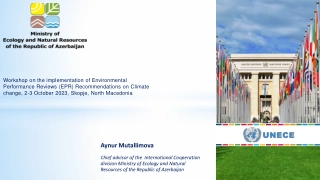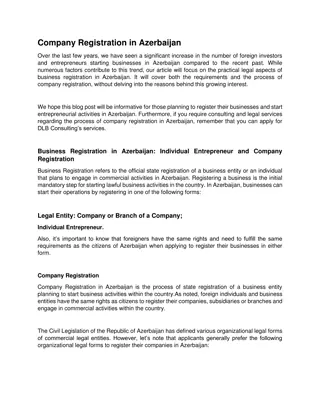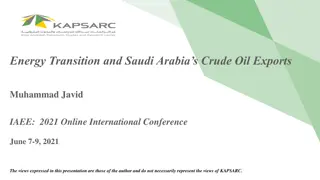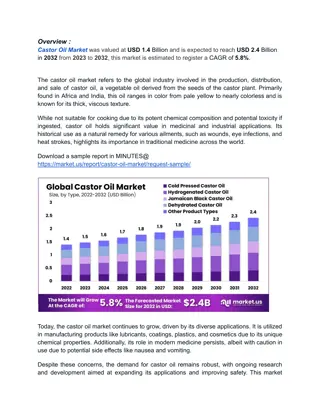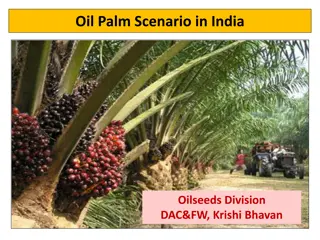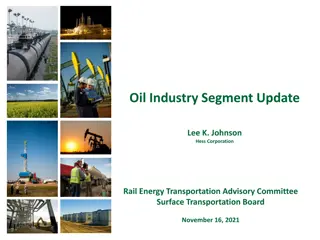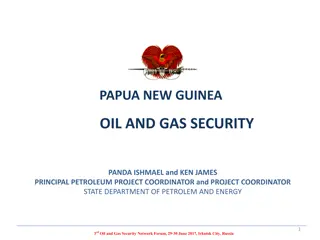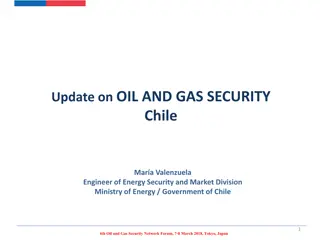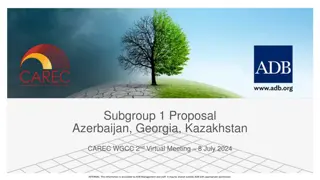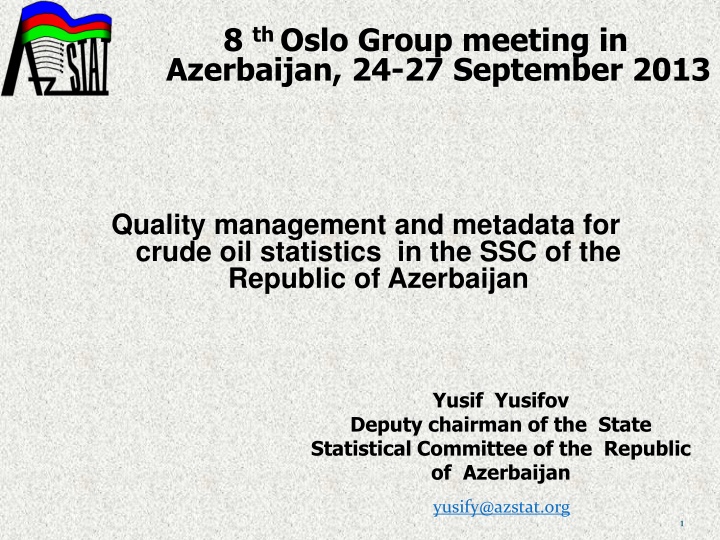
Quality Management and Metadata Implementation in Azerbaijan's SSC
Explore the implementation of quality management and metadata practices in the State Statistical Committee of the Republic of Azerbaijan. Learn about the challenges faced, activities undertaken, and the successful certification process adhering to ISO 9001:2008 standards.
Download Presentation

Please find below an Image/Link to download the presentation.
The content on the website is provided AS IS for your information and personal use only. It may not be sold, licensed, or shared on other websites without obtaining consent from the author. If you encounter any issues during the download, it is possible that the publisher has removed the file from their server.
You are allowed to download the files provided on this website for personal or commercial use, subject to the condition that they are used lawfully. All files are the property of their respective owners.
The content on the website is provided AS IS for your information and personal use only. It may not be sold, licensed, or shared on other websites without obtaining consent from the author.
E N D
Presentation Transcript
8 th Oslo Group meeting in Azerbaijan, 24-27 September 2013 Quality management and metadata for crude oil statistics in the SSC of the Republic of Azerbaijan Yusif Yusifov Deputy chairman of the State Statistical Committee of the Republic of Azerbaijan yusify@azstat.org 1
Outline 1.Quality management and metadata in the SSC of the Republic of Azerbaijan 2.GSBPM for energy statistics 3.GSBPM for crude oil statistics: phases 4.Sub-processes and activities for oil statistics 5.Challenges 2
Quality management and metadata in the SSC of the Republic of Azerbaijan. Metadata as new challenges for world statistics Quality management and metadata system is one of the recommendations of Global Assessment of the official statistics of Azerbaijan which organized by Eurostat,The European Free Trade Association(EFTA) and United Nations Economic Commission (UNECE) for Europe in 2010. 3
Activities of Azerbaijan on Quality Management 2010 Decision about creation of Quality Management system Ratification of policy and aim about Quality Management Creation of new sector for implementation Quality Management system 2011 Quality management system has been applied to the Industry ,Transport and communication and Price statistics sectors of Community as pilot project. 2012 Creation of Quality Management and Information Technology department for effective coordination activities on SSC. Ratification of Activity plan 2012-2013 about implementation of Quality Management and Metada system. Starting implementation Quality management to all sections of the Committee. 2013 Starting implementation QM system to local statistics organizations of SSC. Realization of internal audit to find out condition on divisions of SSC. 4
Forming of external audit by certification organization Contact with Quality Management system (25 June 2013) Original external audit Period of audit 04-09 July 2013 Area of audit Departments of SSC Condition of implementation of ISO 9001:2008 in SSC Direction of audit 5
SO 9001: 2008 Bureau Veritas Certification certify that the Management System of the organisation has been audited and found to be in accordance with the requirements of the management system standard SO 9001: 2008 Original certification date: 15 August 2013 6
What is GSBPM? GSBPM is a speedy tool which gives an opportunity to standardize ,operation, organize single mechanism of production and minimize the mistakes of the management. This model enables coordinate the process with human resource and realize the system with the qualified technological route. Thestructureof the model GSBPM consist of 4 levels : 1. Statistics-business process 2. 9 Steps process 3. Sub-process of each step 4. Description of the sub-processes of statistics-business 7
Why GSBPM for energy statistics Associated with forming ISO 9001:2008 Quality Management in the State Statistical Committee of the Republic of Azerbaijan Recommendation of Global Assessment to the State Statistical Committee Common way for describing process steps Appreciation of the accumulation, usage, evaluation process of the energy statistics indexes Challenges Achievement of the Committee 8
Advantages of GSBPM on energy statistics GSBPM facilitate management of processes Emend the mistakes in time Systematic approach to the problems Increase belief of users Increase quality of statistics information 9
Our strategy Improve the base of the energy statistics process taking into consideration the national version of GSBPM. http://us.123rf.com/400wm/400/400/cobalt/cobalt1208/cobalt120800013/14771685-enter-3d-icono-rojo-metalizado-brillante.jpg Our aim The aim of the GSBPM is provision of the base of metadata system with the standard nomenclature. 10
Generalized Model of Statistical Business Processes (GSBPM) Methodological Conception of Existing Process on Management System on Energy Statistics Standards and map of management of statistical processes on industry and construction statistics 11
Model GSBPM for energy statistics Specify needs Design Build Collect Analysis Disseminate Archive Evaluate Process 12
Model GSBPM for oil statistics Specify needs Analysis GSBPM model for oil statistics is identical to the model of GSBPM on energy statistics. Design Disseminate Build Archive Collect Process Evaluate 13
Continue of phase 1 Phases and sub-processes for energy statistics 1.Specify needs 1.1 1.3 1.2 Consult and confirm needs 1.4 Identify concepts Determine need for information Establish output objectives 1.5 Check data and metadata availability 1.6 Prepare business case 14
Continue of phase 1 1. Specify needs Determine the need on crude oil statistics Output Input Improved official statistical questionnaires International methodology, questionnaire, presentation, users request, orders, decrees 15
Continue of phase 1 1.1 Determine need for information Input Output International requirements and recommendations orders, decrees, reports, presentations Study needs of data users Identification of need on crude oil statistics 1.2 Consult and confirm need Output Input Implementation of discussion with SOCAR and MIE on improvement of crude oil indicators and its coordination and confirmation Minutes of meetings, works and written agreement Offers from SOCAR and MIE 16
Continue of phase 1 1.3 Establish output objectives Input Output Create viable definitions of the variables Decrees and orders of the SSC Conceptual definitions of variable, table outlines 1.4 Identify concepts Input Output Standards, control checking concepts Identify concepts Improved concepts 17
1.5 Check data and metadata availability Input Output Issues with SOCAR and MIE the project approved by Methodological Council, decrees and orders of the SSC Determine internal and external sources Agreements, strategy, analysis 1.6 Prepare business case Output Input Work plan, budget Projects, estimations Make a project work plan, determine the budget Results Phase 1. Approved projects and plans 18
Continue of phase 2 2. Design 2.3 Design data collection methodology 2.4 Design frame and sample methodology 2.3 Design data collection methodology 2.4 Design frame and sample methodology 2.2 Design variable descriptions 2.2 Design variable descriptions 2.1 Design outputs 2.1 Design outputs 2.5 Design statistical processing methodology 2.6 Design production systems and workflow 2.5 Design statistical processing methodology 2.6 Design production systems and workflow 19
Continue of phase 2 2.Design Discussion of the program on processing of the instructions on filling in of the report forms (6- extraction (oil, gas) 1-T G (oil), 1-balance (oil)) in PC Output Input Layout of the output tables Questionnaires, output tables, set of indicators 20
Continue of phase 2 2.1 Design outputs Input Output Questionnaires, output tables, set of indicators Layout of the out put tables Design outputs 2.2 Design variable descriptions Output Input Design variable descriptions, surveys, registers Harmonization of clarification Letters of agreement, resolution, register 21
Continue of phase 2 2.3 Design data collection methodology Input Definition report coverage Draft metadata Metadata 2.4 Design frame and sample methodology Input Output Determination of frame of survey and plan to conduct survey Actual register Survey plan 22
2.5 Design statistical processing methodology Input Output Design statistical processing methodology Letters of agreement , Methodological Council s resolution Statistical processing methodology 2.6 Design production systems and workflow Input Output Preparation of work plan Including of report forms reflecting crude oil data in statistical work program Division of work on Department of Industry and Construction Statistics 23 Results Phase 2. All designs approved
Continue of phase 3 3. Build 3.1 3.2 3.3 Construct components of data collection issues 3.4 Build or Configure workflow Test production system enhance process components 3.5 3.6 Test statistical business process Finalize production system 24
Continue of phase 3 3. Build Create process components Output Input Production system Instruments 25
Continue of phase 3 3.1 Construct components of data collection issues Input Output Production system Issues, instruments Build system 3.2 Build or enhance process components Input Output Build process components Created components Instruments 26
Continue of phase 3 3.3 Configure workflow Input Output Raise the issue Preparation of reports Reports 3.4 Test production system Input Output Test production system Raise the issue Take over 27
3.5 Test statistical business process Input Output Raise the issue Test statistical business process Take over 3.6 Finalize production system Input Output Staffs, production system Skills, production system Finalize production system Results Phase 3. System in production 28
Continue of phase 4 4. Collect 4. Collect 4.1 Select sample 4.2 Set up collection 4.1 4.2 Select sample Set up collection 4.3 Run collection 4.4 Finalize collection 4.3 4.4 Run collection Finalize collection 29
Continue of phase 4 4. Collect Data collection Input Output Data Data 30
4.1 Continue of phase 4 Select sample Output Input Including all economic subjects engaged in crude oil extraction, consumption, import and export in reporting register List of statistical units presenting reports 6-extraction (oil, gas) 1-T G (oil), 1-balance (oil) Set of observation 4.2 Set up collection Input Output Questionnaires data Set up collection Data Data 31
4.3 Run collection Input Output Raise the issue Online collection of the reports Data 4.4 Finalize collection Input Output Finalize collection Data Data Results Phase 4. Data ready for processing 32
Continue of phase 5 5. Process 5.1 5.3 Review, validate & edit 5.2 5.4 Impute Integrate data Classify &coding 5.5 Derive new variables & statistical units 5.7 5.6 Calculate weights 5.8 Finalize data files Calculate aggregates 33
Continue of phase 5 5.Process Classify and mode, micro edit, control, imputation, calculate weights Output Input Statistical data Data 34
Continue of phase 5 5.1 Integrate data Input Output Link data sources and statistical registers Integration of data Data and registers 5.2 Classify & coding Input Output Classification and coding Units data Data 35
Continue of phase 5 5.3 Review, validate & edit Input Output Review, validity check and editing Data Validated data 5.4 Impute Input Output Identification of potential errors and missing Data Estimated data 36
Continue of phase 5 5.5 Derive new variables & statistical units Input Output Derive new variables& statistical units Results of monitoring Variable 5.6 Calculate weights Input Output Approved notes by MCC Calculate weights Data 37
5.7 Calculate aggregates Input Output Approved notes by MCC Calculate aggregates Data 5.8 Finalize data files Input Output Finalize data files Store micro-data Data Results Phase 5. Data ready for analysis 38
Continue of phase 6 6. Analysis 6.4 6.1 6.2 6.3 Apply disclosure control Prepare draft outputs Validate outputs Scrutinize & explain 6.5 Finalize outputs 39
6. Analysis Continue of phase 6 Input Output Produce statistics, quality of data, preparation of data, finalize Data Ready data 6.1 Prepare draft outputs Preparation of initial results based on 6- extraction (oil, gas) 1- T G (oil), 1-balance (oil) reports Input Output Primary output Output 40
6.2 Continue of phase 6 Validate outputs Input Output Primary output Validate outputs Validated outputs 6.3 Scrutinize & explain Input Output Summarized data based on reports Explanation of results based on output data Data 41
6.4 Apply disclosure control Output Input Preserve confidentially of primary data Control of preserve confidentially of primary data Summarized data based on reports 6.5 Finalize outputs Output Input Final outputs for user Summarized data based on reports Prepare final result Results Phase 6. Analysis ready to dissemination 42
Continue of phase 7 7. Disseminate 7.3 Manage release of dissemination products 7.1 7.2 Produce dissemination products Update output system 7.5 7.4 Manage users' inquires Promote dissemination products 43
Continue of phase 7 7. Disseminate Input Output Analysis and data Dissemination of oil data Analysis and data 7.1 Update output system Input Register on dissemination of the issues Analysis and data Update of oil data 44
Continue of phase 7 7.2 Produce dissemination products Output Input Analysis and data Register on dissemination of the issues Oil data production 7.3 Manage release of dissemination products Input Output Working plan on statistical analysis, catalogue of statistical publications Manage oil release products Notify users of release 45
7.4 Promote dissemination products Input Output Dissemination products Promote dissemination products Manage of products 7.5 Manage users' inquires Input Output The assignment of chairman or deputy chairman of the Committee Manage questionnaires on oil, filling of questionnaire Meet requirements of users Results Phase 7. Statistics disseminated 46
Continue of phase 8 8.Archive 8.1Determine the rules of archive 8.3Support of information and metadata 8.4Extermination of metadata and information 8.2Management of archive 8.3.1. 8.1.1. Reference to standard legal acts 8.2.1. Creating of archive catalogue 8.4.1. Make actual the information Identification of metadata and information 8.2.2. Check out archive and expulsion process 8.1.2 Preparation of theory about archive 8.4.2. 8.3.2 . Extermination of metadata and information Overcharge and renewal of information 8.2.3. 8.1.3 Solution of planning and forming tasks of archive operations Determination the completeness of metadata and information 8.4.3. Document the extermination 8.3.3. Catalogue of metadata and information 8.2.4 Format of archive 8.3.4. Verify of archive 47
Continue of phase 8 8.Archive Archive Input Output Procedural nomenclature, data and metadata Archive 48
Continue of phase 8 8.1 Determine the rules of archive Input Output Procedural nomenclature Determine archiving rules Documents 8.2 Management of archive Input Output Determine archiving rules Procedural nomenclature Documents 49
8.3 Support of information and metadata Input Output Preserve data and associated metadata Data and metadata Archive 8.4 Extermination of metadata and information Output Input Dispose of data & associated metadata Data and metadata Archive Results Phase 8. Statistics archived 50


